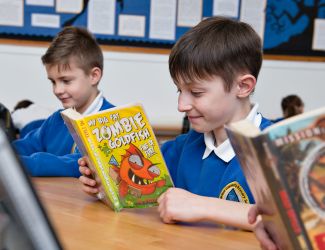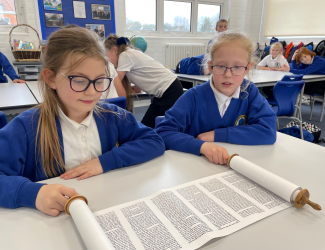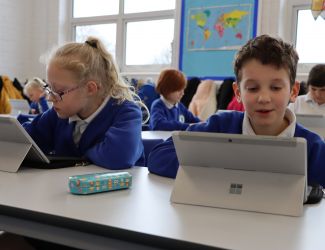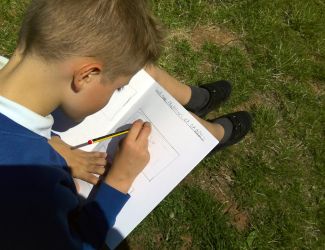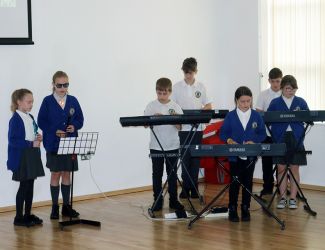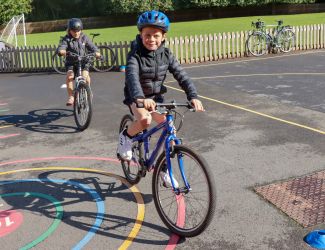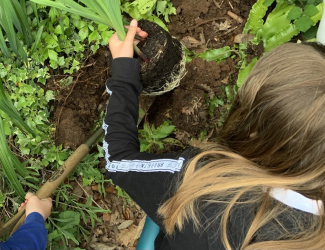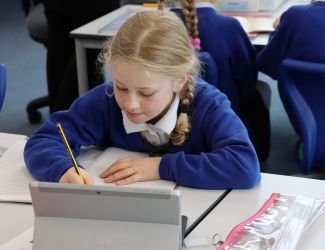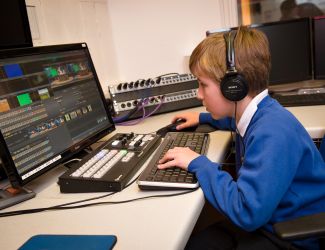Year 3 English Curriculum
Children will be taught the fundamental skills of reading, spoken language and writing in order to become confident communicators. As they take their first steps into Key Stage 2, children will further contextualise their learning and find increasing opportunities to perform to audiences, including in the local town centre. Throughout the year, children will be taught to...
Spoken Language
- Ask relevant questions to extend their understanding and knowledge; take opportunities to learn new vocabulary across all subjects
- Explain what their opinions are and why they hold them, giving evidence in an increasingly articulate manner; give well-structured descriptions, explanations and narratives for different purposes, including for expressing feelings (to a level appropriate to age)
- Maintain attention and participate actively in collaborative conversations such as working together on a curriculum activity, staying on topic and initiating and responding to comments; use spoken language to develop understanding through speculating, hypothesising, imagining and exploring ideas (to a level appropriate to age)
- Speak clearly and audibly and fluently with an increasing command of Standard English; participates in discussions, presentations, performances, role play, improvisations and debates
- Gain, maintain and monitor the interest of the listener(s); consider and evaluates different viewpoints, attending to and building on the contributions of others; select and use appropriate registers for effective communication
Word Reading
- Apply their knowledge of root words, prefixes and suffixes (etymology and morphology) to read aloud and to understand the meaning of new words they meet
- Read exception words, noting the unusual correspondences between spelling and sound, and where these occur in the word
Reading - Comprehension
Engagement in Group and Class Reading
- Listen and discuss a wide range of fiction, poetry, plays, non-fiction and reference books or textbooks
- Read books that are structured in different ways and reading for a range of purposes
- Use dictionaries to check the meaning of words that they have read
- Increase their familiarity with a wide range of books, including fairy stories, myths and legends, and retells some of these orally
- Identify themes and conventions in a wide range of books
- Prepare poems and play scripts to read aloud and to perform, showing understanding through intonation, tone, volume and action
- Discuss words and phrases that capture the reader’s interest and imagination
- Recognise some different forms of poetry [for example, free verse, narrative poetry]
Independent Reading
- Check that the text makes sense to them, discuss their understanding and explains the meaning of words in context; ask questions to improve their understanding of a text
- Draw inferences such as inferring characters’ feelings, thoughts and motives from their actions, and justify inferences with evidence; predict what might happen from details stated and implied
- Identify main ideas drawn from more than one paragraph and summarises these
- Identify how language, structure, and presentation contribute to meaning
Writing
Spelling
- Use prefixes and suffixes and understand how to add them (see English Appendix 1)
- Spell further homophones
- Spell words that are often misspelt (English Appendix 1)
- Place the possessive apostrophe accurately in words with regular plurals [for example, girls’, boys’] and in words with irregular plurals [for example, children’s]
- Use the first two or three letters of a word to check its spelling in a dictionary
- Write from memory simple sentences, dictated by the teacher, that include words and punctuation taught so far
Handwriting
- Use the diagonal and horizontal strokes that are needed to join letters and understand which letters, when adjacent to one another, are best left unjoined
- Ensure that the downstrokes of letters are parallel and equidistant; that lines of writing are spaced sufficiently so that the ascenders and descenders of letters do not touch
Grammar
- Extend sentences with more than one clause by using a wide range of conjunctions, including when, if, be-cause, although
- Use the present perfect form of verbs in contrast to the past tense; chooses nouns or pronouns appropriately for clarity and cohesion and to avoid repetition
- Use conjunctions, adverbs and prepositions to express time and cause
- Use fronted adverbials with commas
- Use the possessive apostrophe with plural nouns; use and punctuate direct speech
- Use the grammatical terminology in English Appendix 2 accurately and appropriately when discussing their writing and reading
Composition
- Plan their writing by discussing writing similar to that which they are planning to write in order to understand and learn from its structure, vocabulary and grammar; discuss and record ideas
- Compose sentences orally (including dialogue), progressively building a varied and rich vocabulary using an increasing range of sentence structures
- Organise paragraphs around a theme; in non-narrative material, using simple organisational devices [for ex-ample, headings and sub-headings]
- Create settings, characters and a plot (during narrative writing)
- Evaluate and edit by assessing the effectiveness of their own and others’ writing by suggesting improve-ments; propose changes to grammar and vocabulary to improve consistency, including the accurate use of pronouns in sentences; proof-read for spelling and punctuation errors
- Read aloud their own writing, to a group or the whole class, using appropriate intonation and controlling the tone and volume so that the meaning is clear.

